Instructional Series
Welcome to the English medium literacy instructional series teaching and learning resources for years 1 to 8.

- Gold
- Blue
- Orange
- Red
- 1
- 2
- 3
- 4
- 2
- 5
- 8
- 4
- English
- Social Sciences
- Health and Physical Education
- Fiction
- Non-fiction
- None
- Stories
- Articles
- Poems
- Tupu | Seedling
- Consonant patterns
- Initial and final blends
- Long vowels
Search results
13 items - Showing 1 - 10
-
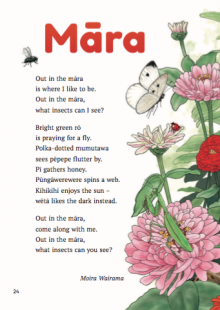
-
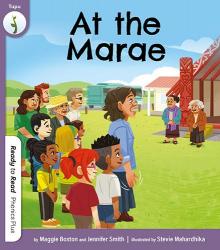
At the Marae
What do we do when we visit a marae?
Focus sounds: Revision
New high frequency words: they you
-
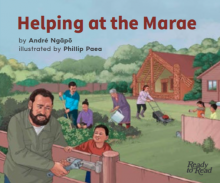
Helping at the Marae
by André Ngāpō
illustrated by Phillip Paea
When Nikau and his whānau help out at the marae, Nikau discovers that his little brother, Tama, has his own ideas about how he can help. Helping at the Marae has particular relevance to Māori students, but many students will identify with the context of helping grandparents and working alongside other family members.
Blue 2
-
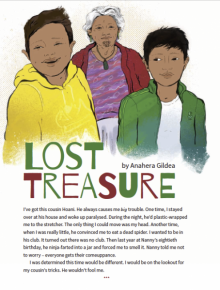
Lost Treasure
by Anahera Gildea
"I’ve got this cousin Hoani. He always causes me big trouble. One time, I stayed over at his house and woke up paralysed. During the night, he’d plastic-wrapped me to the stretcher."
-
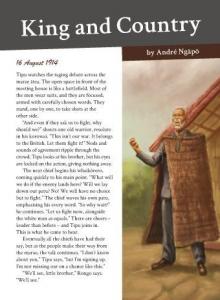
King and Country
by André Ngāpō
illustrations by Andrew Burdan
This fictionalised story is based on the controversial issue of Māori fighting for the British Empire during the First World War. Students will need some knowledge about the history of our race relations and, in particular, the colonisation of Aotearoa by the British.
-
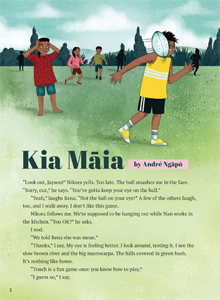
Kia Māia
by André Ngāpō, illustrations by Minky Stapleton
Jayson has just arrived in New Zealand to stay with his nan. He is staying at her marae preparing for an unveiling but is feeling out of his depth. With help from his younger cousin, Nikora, Jayson slowly feels his way, learning about tikanga Māori and how he, too, belongs.
-

Pepeha
by Pātaka and Monique Moore
This article explains what a pepeha is and why it is important in Māori culture.
-
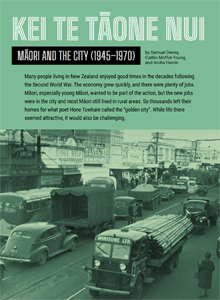
Kei te Tāone Nui: Māori and the City (1945–1970)
by Samuel Denny, Caitlin Moffat-Young, and Aroha Harris
The post-Second-World-War era in Aotearoa New Zealand saw one of the fastest rates of urban migration in the world, with Māori migrating to cities in large numbers to take advantage of new economic opportunities. The “golden city” offered much, but it came at a high price. Despite an unquestioned narrative in Pākehā communities that New Zealand’s race relations were world leading, Māori moving to the city encountered prejudice and discrimination at many levels. Māori responded to these challenges in multiple ways, for example, by establishing formal and informal groups that strengthened collective expression of Māori cultural values and practices. By gathering together to debate and take action on key issues, the seeds were sown for the modern Māori protest movement as well as the forging of a new urban Māori identity.
-
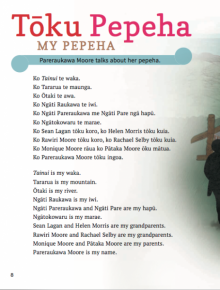
Tōku Pepeha
by Pareraukawa Moore
This text follows on from the article “Pepeha” in this journal. The author, Pareraukawa Moore, describes her own pepeha and what each element means to her.
-

Taonga
Written by Kiwa Hammond
Illustrated by Adele Jackson
When Mahi and her cousin Hani go to Nan’s house after school, they tell her about their school project – to write about something that is a taonga to them. After talking with Nan, both children realise what they will write about.
While this story has particular relevance to Māori students, many students will identify with the ideas of whānaungatanga (special family relationships) and taonga (a treasure or something that is special to a person).
Orange 2
#LFH






 Literacy Online home
Literacy Online home
